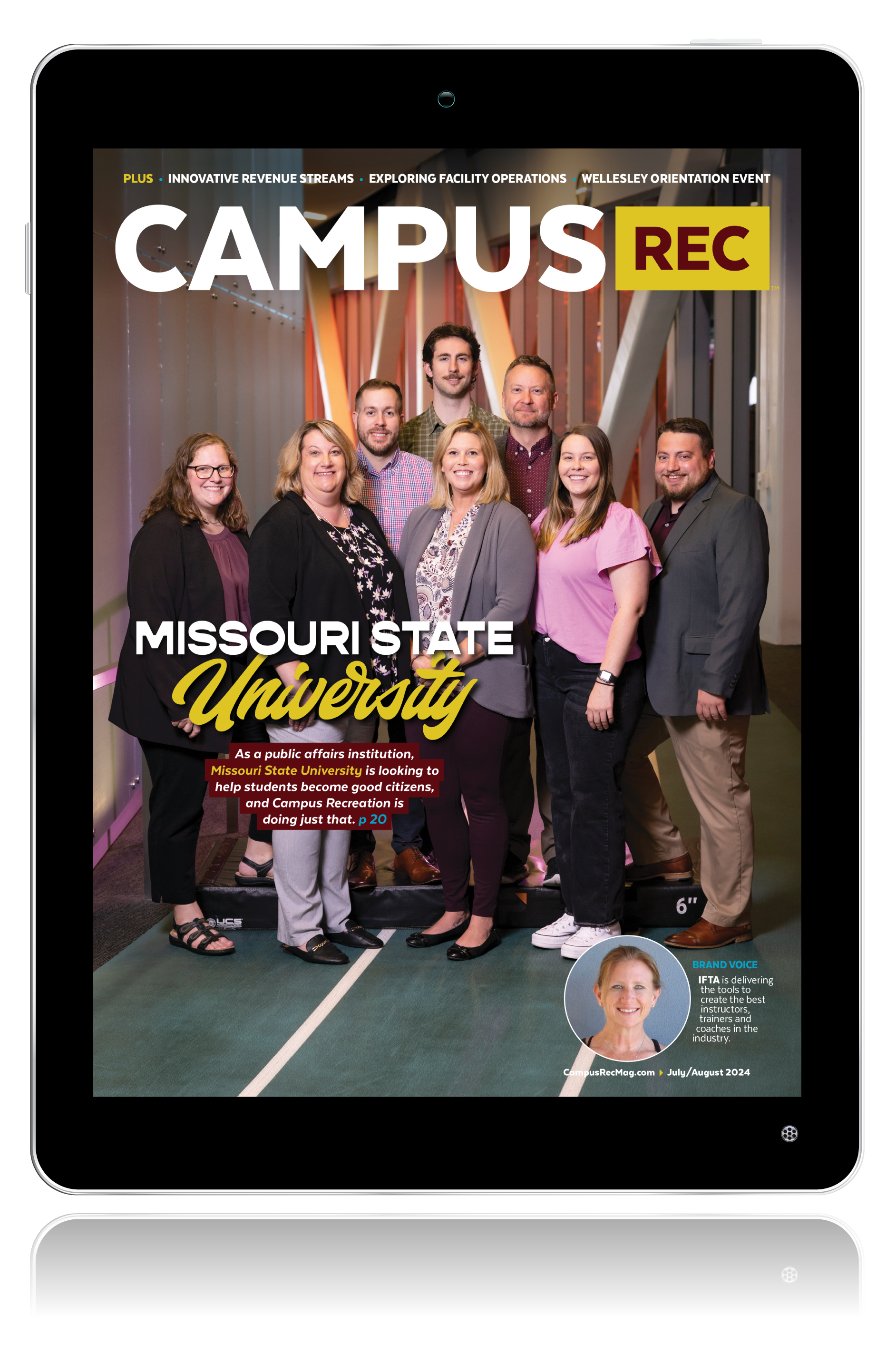I often hear from clients and colleagues that they are unable to hire additional positions because they don’t have anywhere to put them. Not having “space” for a position is no reason to hold back the potential of your department. Utilizing technology, trust and rethinking our traditional office environment can catapult you to new opportunities. Over this three part series, learn three ways to implement the office of the future.
The Remote Worker
In 2017, 43 percent of the U.S. workforce reported they work remotely at least part of the time. That number is up from 39 percent as reported in 2012. When discussing remote working in the campus recreation environment, we often are quick to come up with reasons of why it won’t work. Let’s explore a few reasons why it could work.
Increased Productivity
Employees are more productive when allowed to work remotely. Working remotely can limit distractions from being in the office environment. Plus, it can allow our team members to focus on the task at hand. According to Gallup, employees can maximize productivity when working remotely 60 to 80 percent of the time. However, working remotely between 81 to 100 percent of the time can decrease employee engagement if dedicated opportunities such as in-person meetings, conferences or other activities are not utilized to promote culture.
A Focus Work-Life Harmony
Work-life harmony is a newer lens to look at work-life balance. Work-life balance can be assumed to be about separating work from home life. Work-life harmony is dedicated to increasing well-being and employee engagement by having a symbiotic relationship between work and home life. Working remotely can encourage employees to take care of their “home” needs when appropriate while becoming more focused and engaged at work.
Decreased Turnover
In 2015, millennial turnover cost the United States 30.5 billion dollars. Contrary to popular belief, the millennial workforce isn’t jumping ship for the next opportunity that has the next best thing to offer. Many studies and articles continuously tell us people don’t quit jobs; people quit managers and company culture. This scenario is no different in our newer workforce. The desires of the workforce are constantly changing. Consider these changes in leadership from past to future:
- My Paycheck to My Purpose
- My Boss to My Coach
- My Satisfaction to My Development
- My Annual Review to My Ongoing Conversations
- My Weaknesses to My Strengths
- My Job to My Life
Increased Real Estate in Facilities
According to ACSM Facility Standards and Guidelines, in addition to industry best practices, offices should be between 80 to 100 square feet and not consume more than 1,500 total square feet. Reception spaces should be between 400 to 2,000 square feet or approximately 5 percent of your total square footage, depending on your needs and goals. Depending on your budget, needs, and footprint of building or renovated spaces, you can maximize your physical activity spaces by decreasing the allocation for offices.
With the influx of coworking and shared workspaces popping up across the nation, perhaps there’s a place for this environment in our campus recreation centers. Although drastic changes can be challenging or perhaps alarming to those on the conservative end of the Change Style Indicator, consider how these tips might benefit your department:
- When replacing computers, shift to purchasing laptops instead of desktops. The increase of web-based and cloud-based applications make this easier than ever.
- Repurpose individual office spaces with open-air work spaces with sit-to-stand desk options and dual monitors at each location. Team members can come in, grab a spot and dock their laptop to the monitors to work away.
- Create smaller solutions rooms with a round table and up to four chairs. This allows people to have private conversations and phone calls when needed. Amber Long, the executive director for wellness and recreation at the University of Colorado Denver, strategically designed an open air office space with solutions rooms throughout the facility. According to Long, “we call them solutions rooms because most of the time we find a solution in there.”
- Implement departmental issued smartphones that allow team members to work anywhere. To save costs on the devices, create an allowance of data for team members to utilize their personal smartphone. Use a system that sends the “dedicated office number line” to their personal device.
- Create a task force to analyze and assess the department’s usage of paper and how to eliminate excess waste and encourage the use of electronic forms and storage. Less paper = less storage needs = less file cabinets = less bulky desk = less square footage needed = increased “green” operating standards.
Regardless of whether you can jump head first into the remote workforce, consider the possibilities by running an analysis on your department. Stay tuned for Part Two of the series on increased technology and automation systems.











That is a very interesting reason to let your employees work remotely! I’ve heard a lot about people wanting to save costs on office space or not being able to find talent nearby (so they search further away or even internationally), but I’ve never heard of people hiring remote workers because they don’t have space in the office. Good to know that this is a thing! Remote working arrangements can indeed offer a great outcome, especially with digital workspaces such as Best Place to Work or Workspace 365, communication tools like Skype and Yammer and people being able to connect to the internet basically anywhere. I really like your tips!